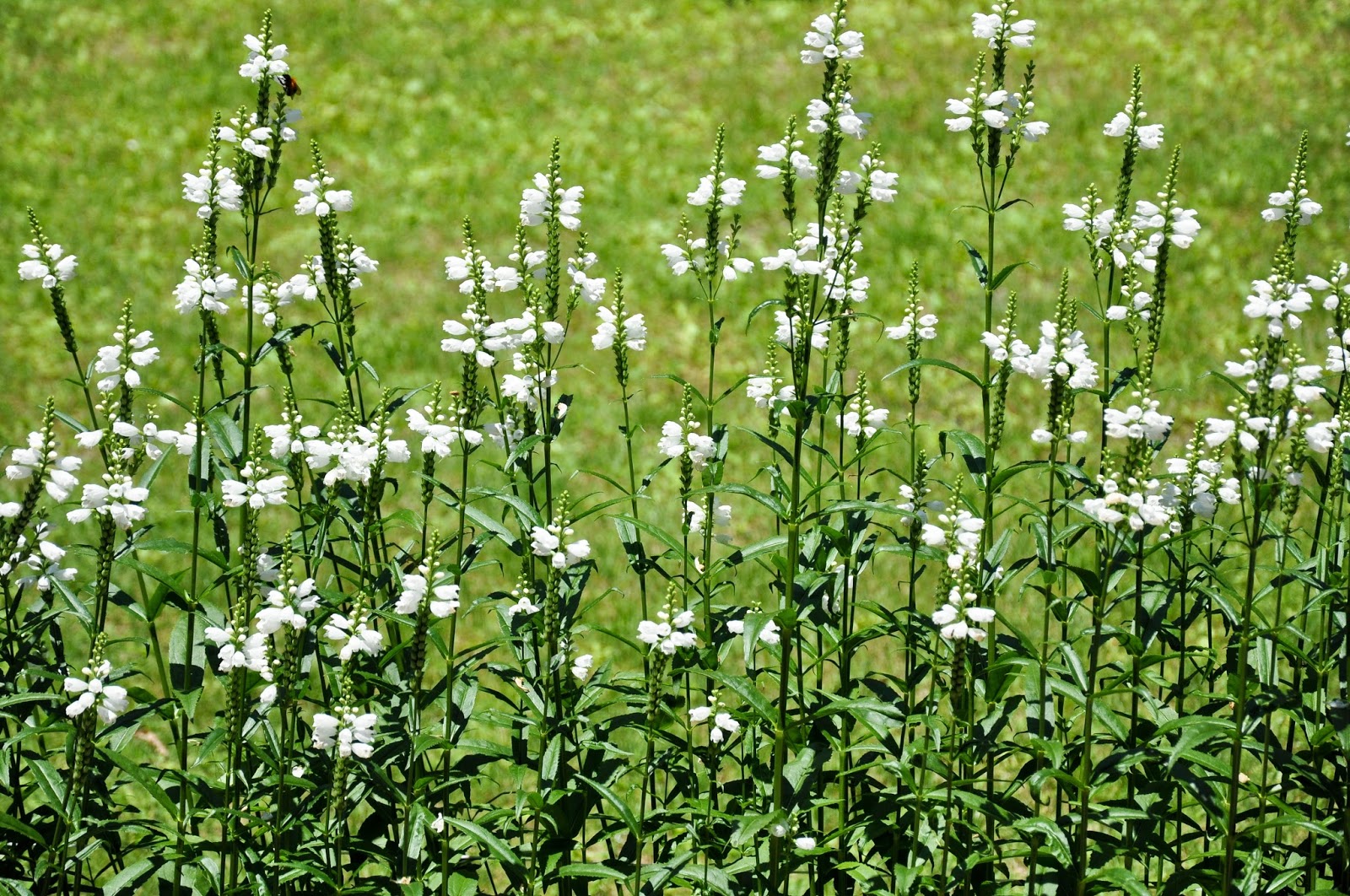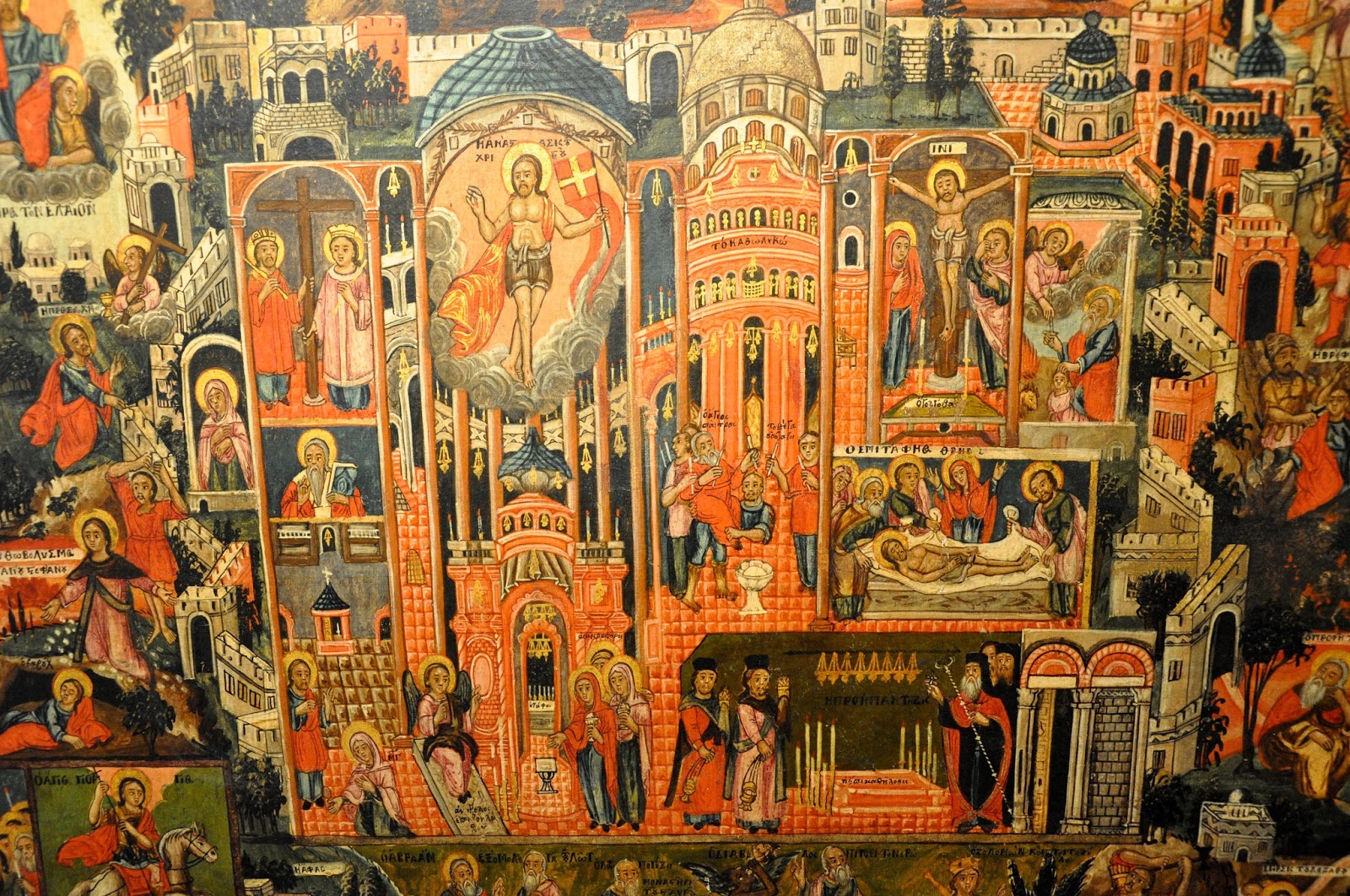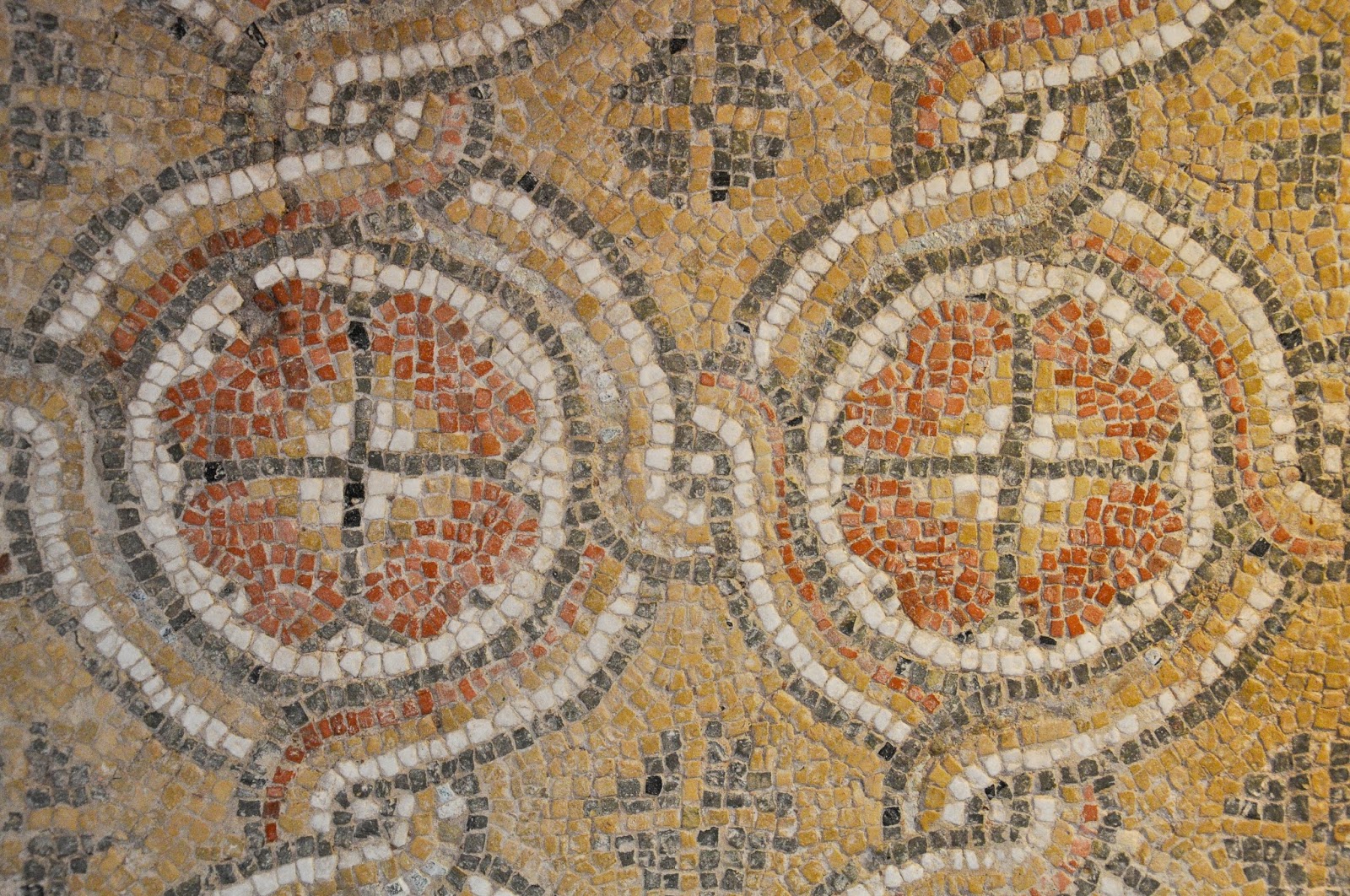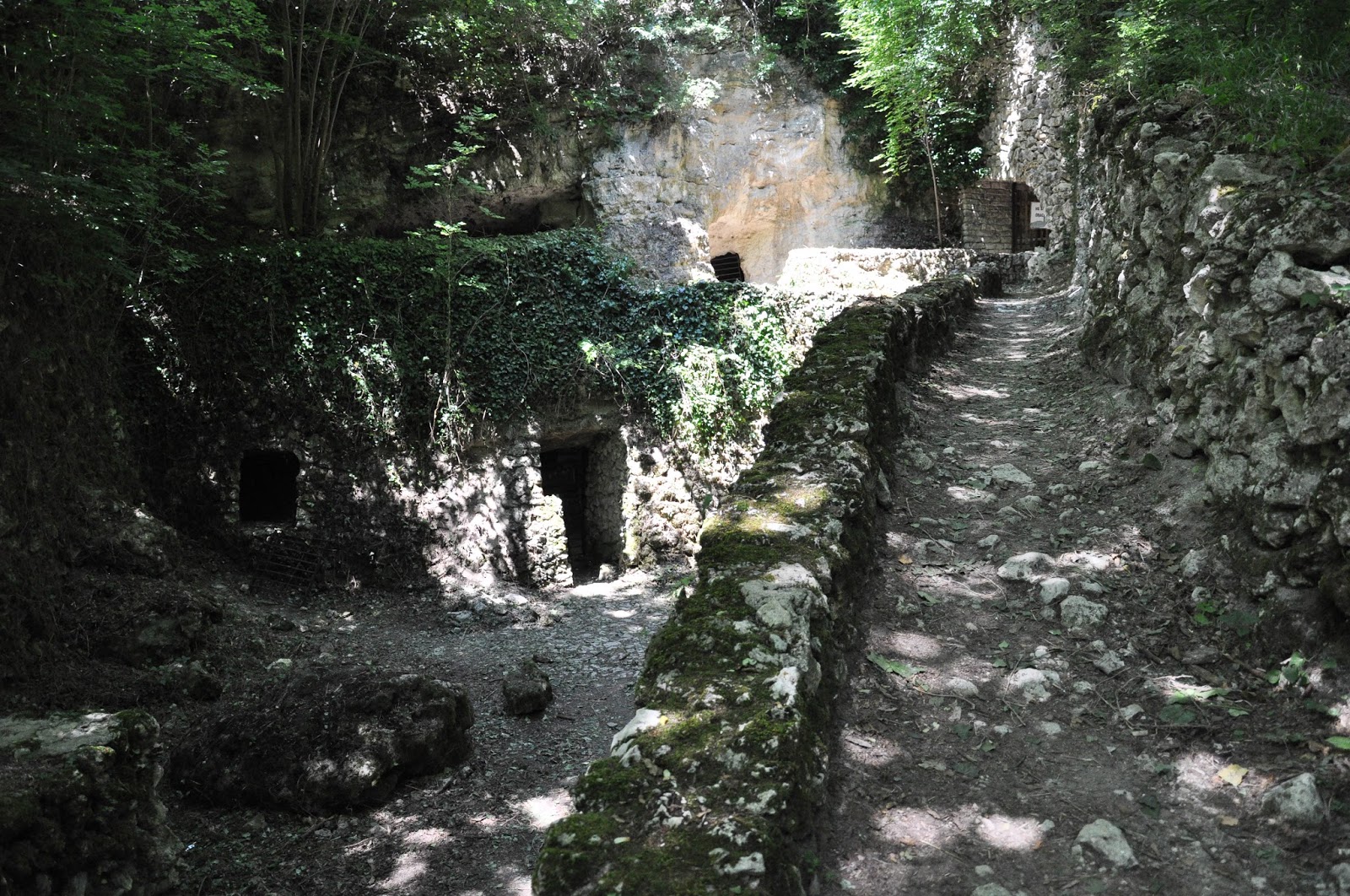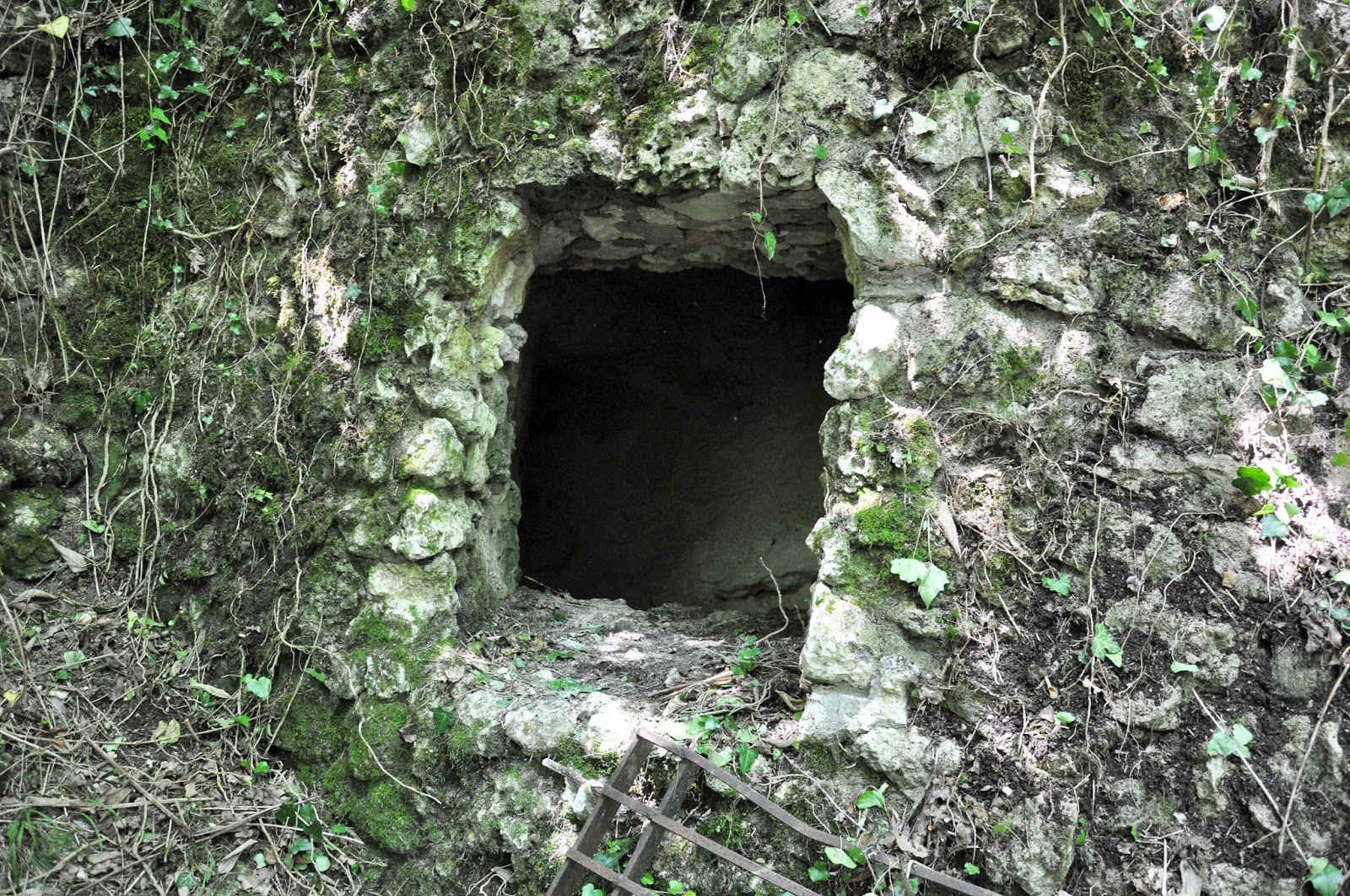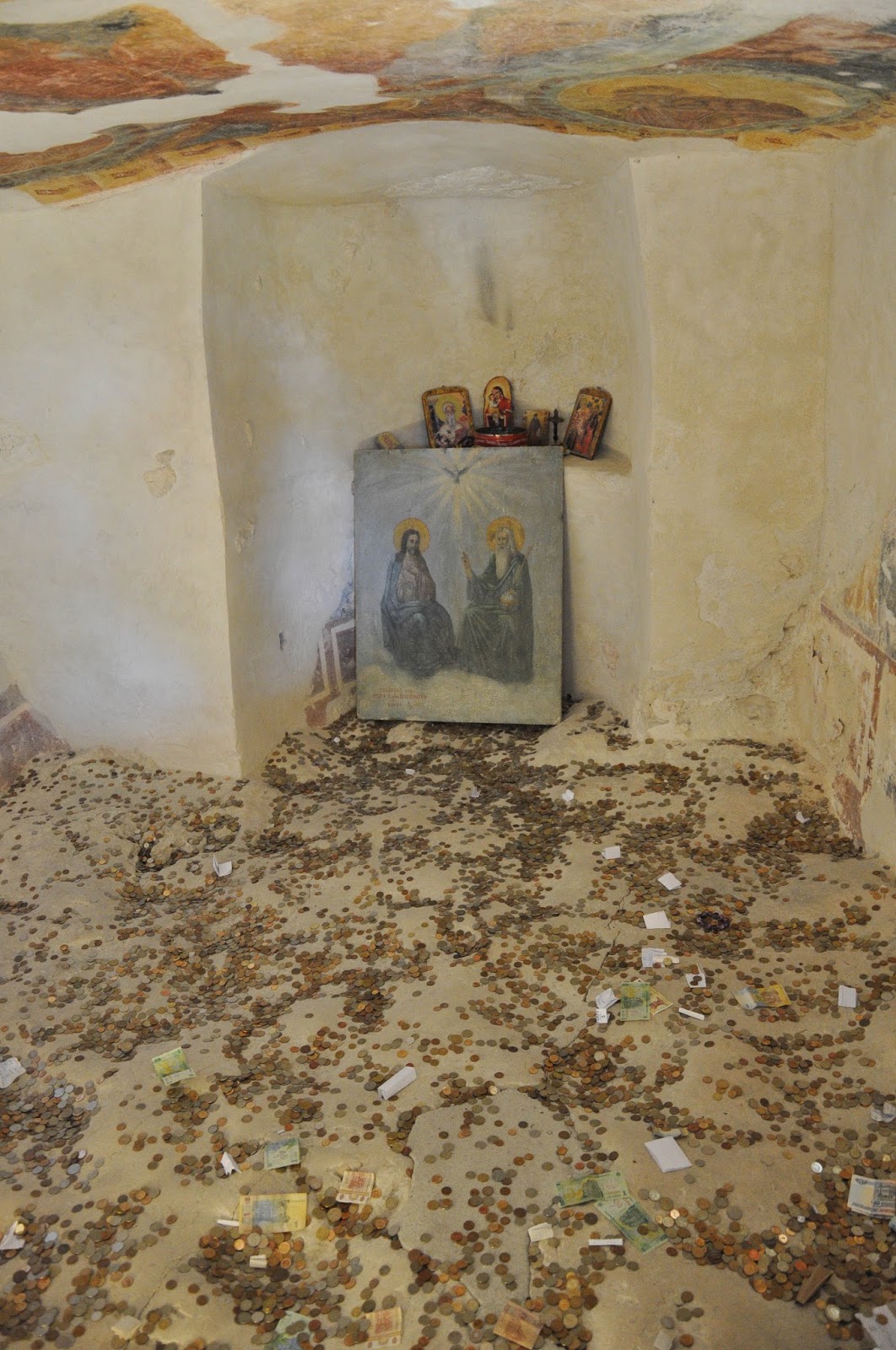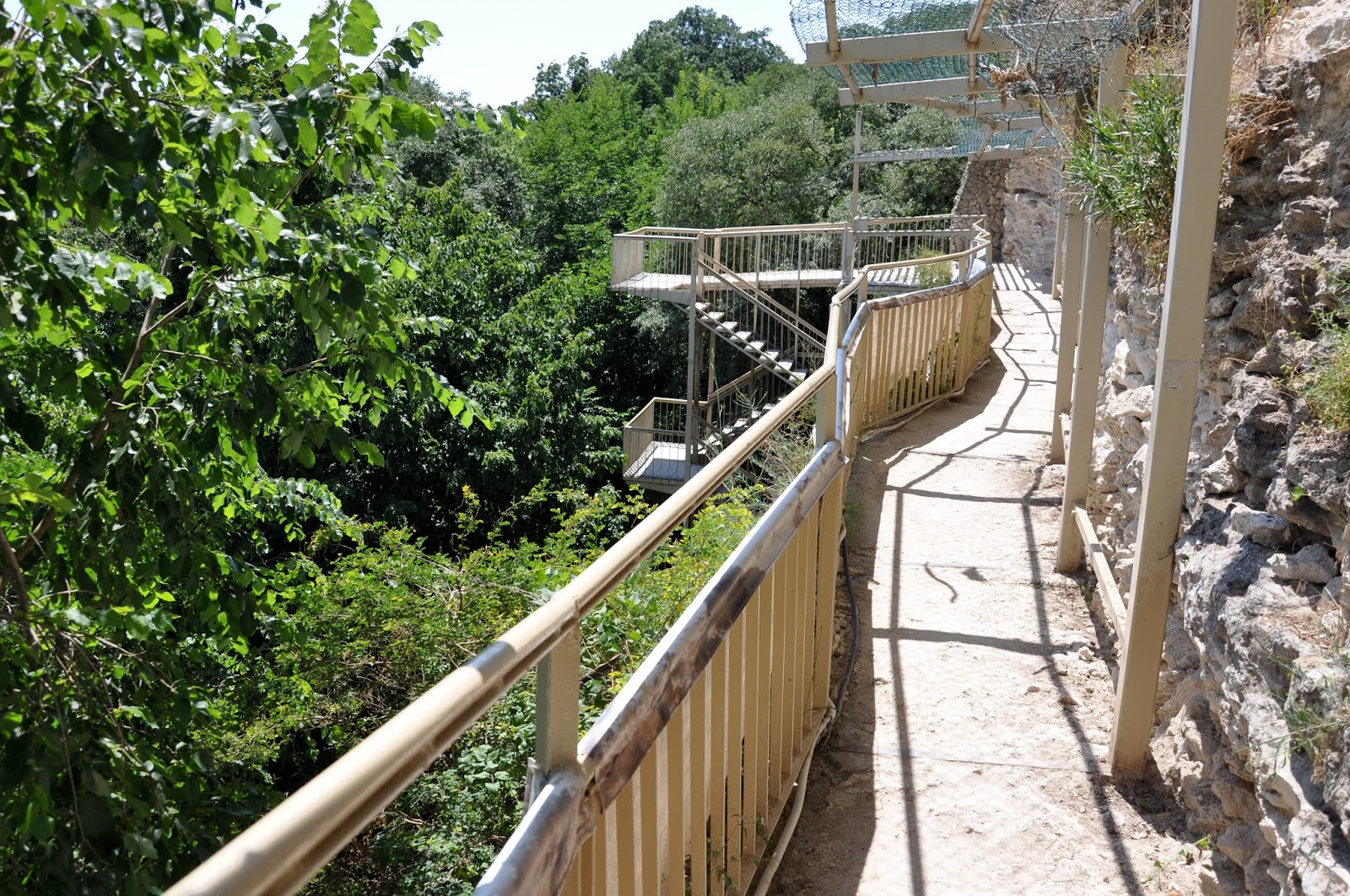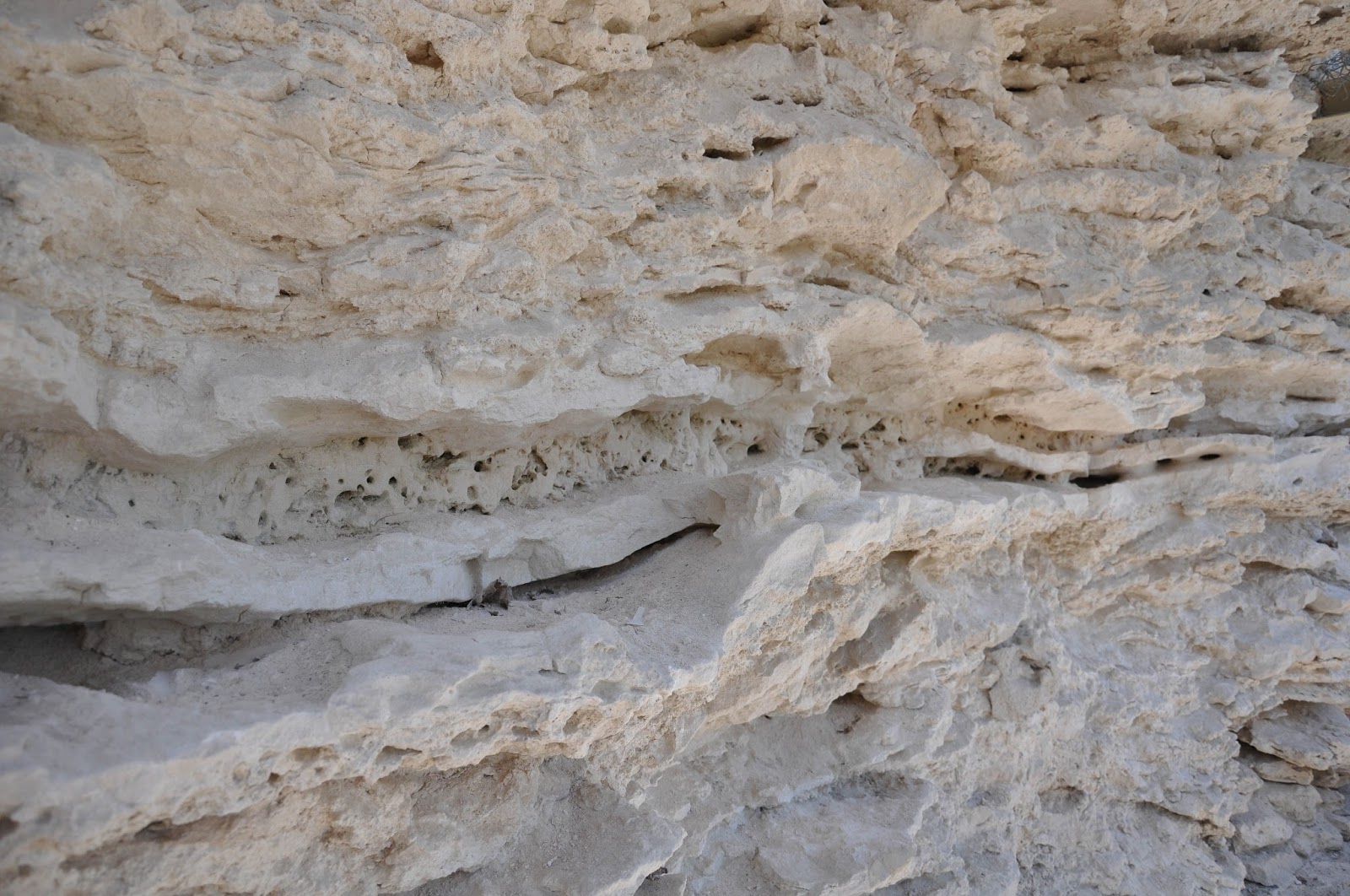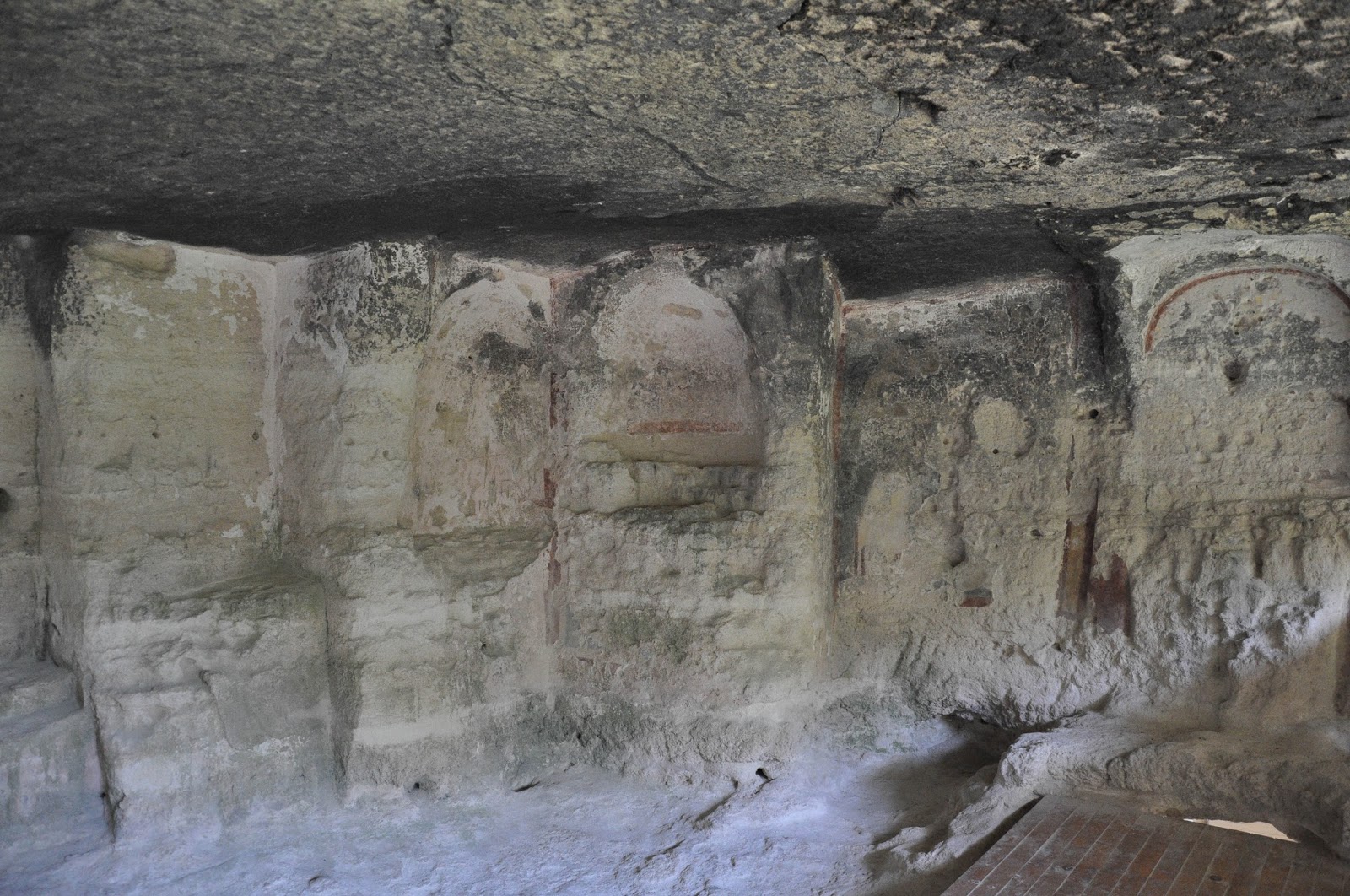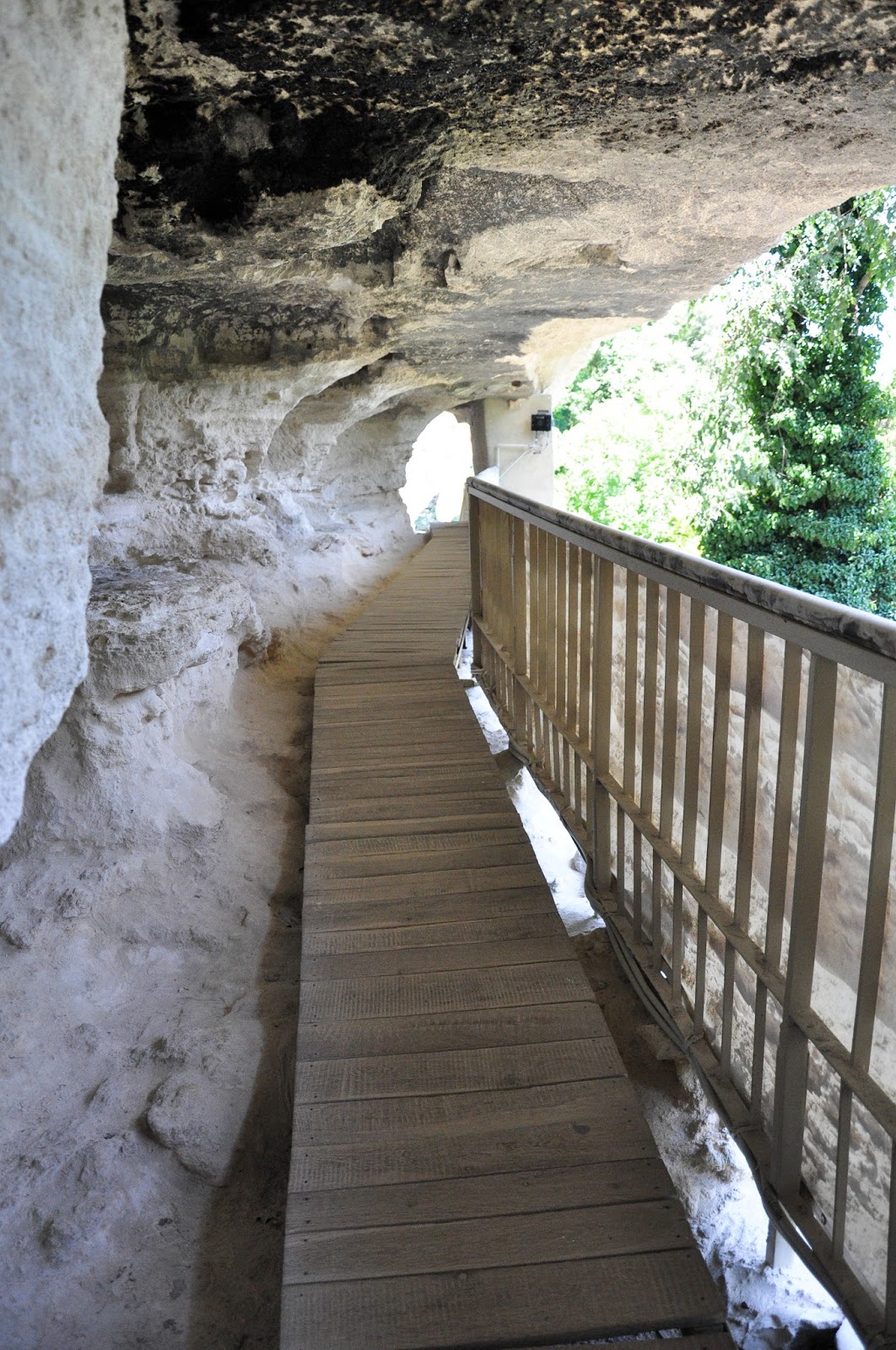Today I am going to take you to a very special place – a monastery nestled in the rocks just outside of Varna in Bulgaria. It dates back to the 13th century and it is a quiet, sunny spot offering the perfect combination of spiritual discovery and sightseeing.
Known as Aladzha Monastery, it is a limestone rock up to 40 m high in which hermit monks had hewed their cells, chapel, kitchen and even a crypt. It offers a fascinating glimpse into the life of people who had withdrawn from the world into the bosom of nature in order to find unity with God.
I remember visiting Aladzha Monastery many times as a little girl. We would go higher and higher up the steps reaching the first and then the second level of premises in the rock and I would hold tight onto the railings stealing a glance at the majestic view of tall pine trees and the sea beyond their tops.
As a grown-up I have been back several times, too. The place is well maintained with a lovely little exhibition centre attached to it, lots of plants and flowers in bloom all through spring and summer and a light show taking place a couple of times during the week.
Being so close to the beach resorts, a visit to Aladzha Monastery is also the perfect day out, as you can either go to the beach in the morning and then spend the hottest hours of the afternoon sheltered by the thick forest which surrounds it or explore it in the early afternoon and then hit the beach when the sun subsides a little around 4 pm.
So, on a hot and sweaty summer day, we jumped in my father’s car and headed off to explore.
To reach Aladzha Monastery you need to follow the road to the famous local beach resort Golden Sands. Just before the resort there is a road fork a short drive from which lies the monastery. It is not terribly well signposted, I am afraid, and the one or two signs we saw pointing us to our destination were half hidden by the lush bushes and trees hugging the road from both sides. As we usually rely on my parents to drive us there, for a split second we were unsure which way to go. Thank God for GPS, as the disembodied voice guided us to the right place.
The small parking lot at the bottom of the flight of steps leading up to the monastery complex can get really busy with cars and coaches, so we were relieved to find a space. It was around lunchtime, so the large tourist groups had already left.
We walked up the steps and were immediately enveloped by the green silence of the dense forest. A refreshing breeze was a welcome respite from the strong sun rays.
As usual, we walked into the exhibition centre first. It is small, compact and gives you a good introduction to the history of Aladzha Monastery making you appreciate it even more. The monastery is one of several rock-hewn churches and cloisters in Bulgaria and the most important one on its Black Sea coast. A pictorial representation gives you an idea what life was like for the hermit monks sheltering in the rock.
The walls and the ceilings of the monastery used to be covered with colourful frescoes. Unfortunately, nowadays only a very small portion of these are preserved. Still, due to its exuberant colours the place was called ‘Aladzha’ (a word of Persian-Arabic origins meaning ‘colourful’ or ‘multicoloured’) after Ottoman Turkey enslaved Bulgaria in the 15th century. Around the same time the monastery began to decline and most probably it was completely abandoned around the beginning of the 16th century. Its Christian name was forever lost.
Large panels with information in several languages guide you through the exhibition centre. There are also several icons and other religious objects on display.
I was particularly taken with this image of a breast-feeding Virgin Mary, which, even though anatomically incorrect, still is a beautiful representation of motherly love.
On the upper floor of the exhibition centre there are floor mosaics from an Early Christian Episcopal Basilica dating back to the 5th century discovered in Varna.
Once back outside, we decided to do a little detour. You see, about 700 m away from the rock-hewn Aladzha Monastery, a group of caves, called the Catacombs, has been discovered in the dense forest. Archaeological findings (ceramics, coins, etc.) indicate that the caves had been used as dwellings as early as the 5th century. They are much less preserved than Aladzha Monastery, still are a fascinating, yet a very creepy place to visit.
We headed into the forest following the path to the Catacombs. As the forest is part of a protected nature park, walking through it is a wonderful experience. There are several types of trees identified with informational plates, the light sieves through the dense leaves and, to our surprise, lots of butterflies fluttered all around us.
The path was uneven, often crossed by thick tree roots, going up and then down and then up time and time again. After a few breathless minutes we reached the Catacombs.
Openings made in the rock revealed dark and damp rooms with what looked like deep tombs cut in their floors.
Thick iron bars on the windows and doors obstructed the way forward. The iron grating has fallen off one of the openings though.
In all honesty, I wouldn’t have wanted to go inside anyway, as it was all really creepy, plus there is a constant danger of rockslides and to top it all, several lizards ran past me up the leafy walls.
I snapped some hurried pictures and then dragged my husband away from the place.
We followed the magical path back to the exhibition centre. We were ready to explore Aladzha Monastery and to feel its amazing energy once again.
We went up the steep steps going all the way to the top.
At the end of a natural recess in the rock, a small chapel had been built by the hermit monks. Nowadays, its door is always locked, but you can sneak a glimpse inside through a small window covered with iron bars.
Here is where fragments of the original frescoes have been preserved, giving you a fabulous idea of how the place looked in its heyday.
People have taken to throw coins and pieces of paper with prayers and wishes on the floor of the chapel, which can’t be good for its preservation, I am afraid.
From the top level of the monastery an amazing view delights your eyes. Tall pine trees stand in front of the rock and beyond their green tops the blue sea stretches all the way to the horizon.
We walked slowly back to the steps following the recess in the rock.
The floor and the wall were uneven, with curves jutting out and then receding in deep crevices.
At the bottom level of the monastery we explored the cells in which the monks slept each night…
their refectory, kitchen…
then the crypt in which the bones of the deceased monks were kept and the small cemetery. Again coins were left on top of the slabs covering the old graves.
The ceilings were black with sooth from the fire used to cook the meals of the monks and to keep them warm during the harsh winters. It was a small detail, but for a split second it made me feel close to understanding what life was like there six centuries ago.
If you ever find yourself in Varna and would like things for your to-do list, make sure that you put a visit to Aladzha Monastery at the top. It is a fabulous place and it makes you feel recharged and energetic after an hour spent exploring the rock-hewn monastery and seeing for yourself how people lived according to their faith.



